In partnership with On Empathy, Treaty Lands, Global Stories is an initiative intended to create a space for conversations about place, diversity, and inclusion in the UWSA curriculum. Our goal is to look beyond the western world in our cultural study, acknowledge Canada’s indigenous heritage, and respond to the diversity of the student body. All students, alumni, and faculty are invited to join us in this important conversation. Email thoughts and ideas to treatylands.globalstories@gmail.com.
The following remarks were shared at the beginning of the “Treaty Lands, Global Stories” discussion on November 9, 2016. This article continues the series begun by Paniz Moayeri’s piece, Help! I’m Lost in the Curriculum.
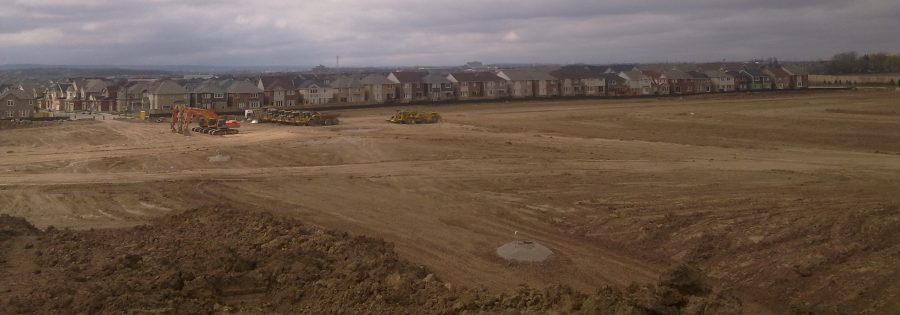
We live on a continent where one set of histories and heritage was forcibly substituted for another. (Milton – photo by author.)
I always felt, growing up, that there was something strange about North America – it was a place without a history. We would drive around and see highways, and houses, and power lines, all built on the land as though they were the first thing ever to sit there.
And I would learn history, but mostly it was the history of somewhere else – of England, of Europe, of Greece and Rome. Why did I feel as if the actual history of this place had been left behind, erased, forgotten?
What I came to realize is that North America is not a place without a history; it has, instead, a Substituted History. We live on a continent where one set of histories and heritage was forcibly substituted for another. We’re living with a ruptured historical consciousness, where the main narrative that drives our current culture-making is an import from somewhere else.
Most of the people here come from somewhere else, too, and the stories and myths we bring with us were shaped by a different land from the one on which they now sit.
Many of us have an immigration story somewhere in our family history. In my case, it has to do with my great-great-grandfather, a coal miner somewhere in rural England, telling his son, “Listen, when you grow up, I don’t want you to have to mine coal.” And Leonard Unsworth, helped by his father’s backbreaking work, didn’t have to. He was able to get his education, came to Canada, and eventually became a school principal in Montreal. And he had a son named Ian, who had a daughter named Leslee, who had a son named Samuel.
And here I am. And here we are, discussing how we can design a more inclusive curriculum at a school of architecture in the country of Canada, on the continent of North America. And the question of whose histories should be taught, and how, is a pretty difficult and complicated one, because of the ruptured historical continuity of this place, and of this country we exist in.
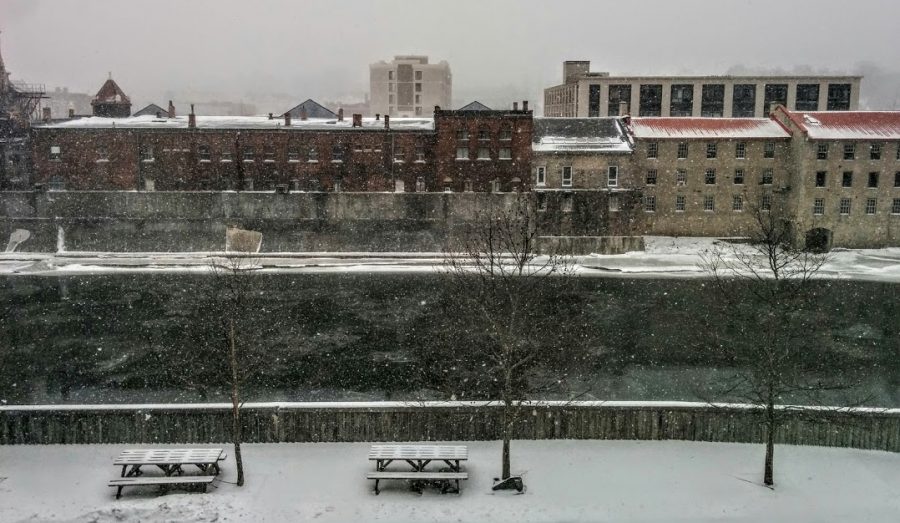
Our school sits on the Haldimand Tract – six miles on either side of the Grand River, granted to the Six Nations in 1784.
It’s a hard question, but it’s one that’s really important to me. Why? Why does this matter to me, why is it absolutely critical?
It matters because I have gradually come to see what a privilege I had in that my immigrant story was the one that was reinforced through the cultural history program. I was given the gift of continuity in my story, and I was oblivious to it at the time. Like I mentioned, my family history contains narratives of immigration. Everyone living here who is not indigenous to North America has an immigrant story. But in the weirdness of this continent with its disrupted, imported historical narrative, only some of those immigration stories are reinforced.
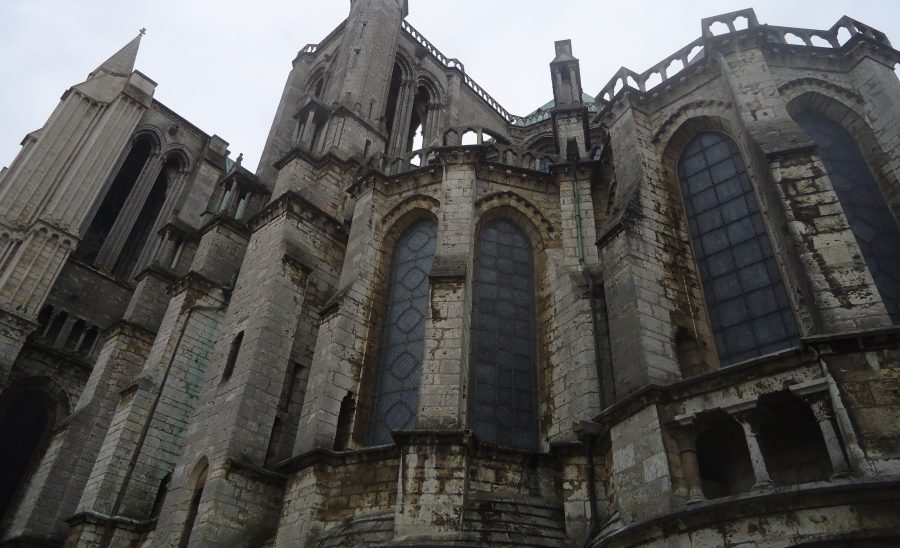
I was learning my history, the history that thrilled me. (Chartres Cathedral – photo by author.)
In middle school, in high school, the history I was learning was my own history, even though I was on a different continent from where most of it happened. And then, arriving in university, once again we were diving back into the trajectory of Greece, Rome, medieval Europe, industrial England – I was right at home. This was my history, the history that thrilled me, the history that produced the cathedrals and castles and old cities that got me excited about architecture in the first place. We were even reading the Bible, a book that played a key role in shaping my identity growing up.
Continuity of story.
An uninterrupted historical narrative.
Many of my classmates did not have this privilege. It’s not as if they were explicitly told that their own history, their own culture, didn’t matter in this place. But there was an implicit expectation that they would be willing to set aside their own stories, and adopt a different narrative for a time: put it on like a mask, wear it like clothes. For these students, that rupture in North American history became personal.
So why does this matter to me? Here is one reason: because I want every student who comes into this school to have the chance I had, to see themselves in history, to learn that no matter where in the world they live or where they come from, they are part of a continuous story, a story that is still being written.
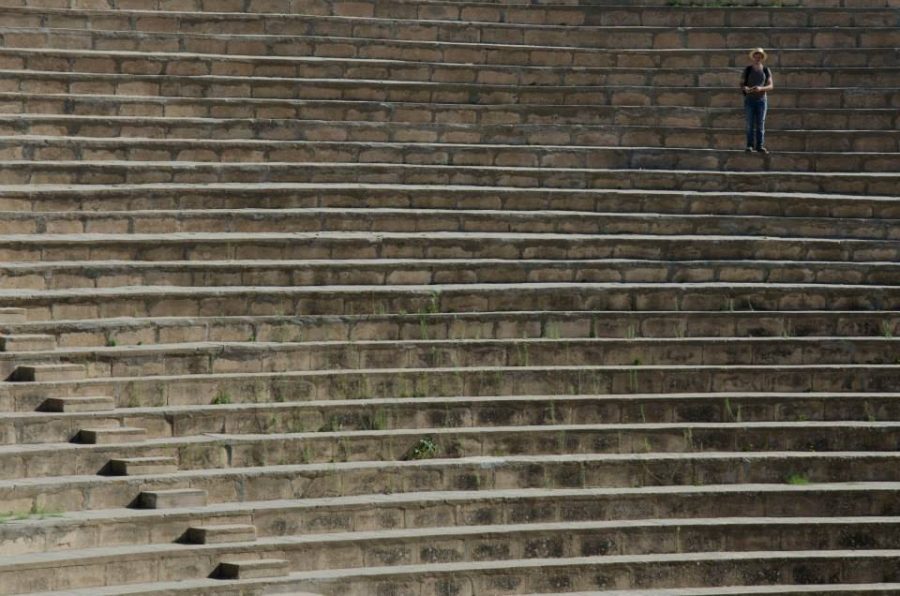
Samuel standing in the Roman Theatre in Carthage (Tunis, Tunisia – photo by Simon McKenzie.)
And there’s a second thing. Designing an inclusive curriculum is crucial not just for the empowerment of students learning their own history, but the empathetic importance for me in learning theirs. A tremendously important moment for me in the Rome term was travelling to Tunis in North Africa – my first time outside of Europe or North America – and experiencing that here was something different, but also something the same. The old town of Tunis was both like and unlike the tangled streets of Venice. The silence in the courtyard of an ancient mosque was both different and alike to the silence of a cathedral cloister. Some things about our cities are always the same because we are always human. Other things are wildly, wonderfully different.
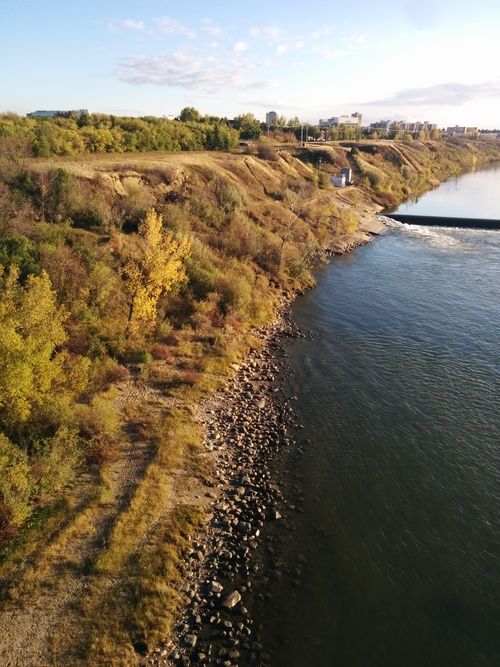
South Saskatchewan River (Saskatoon, SK – photo by author.)
Living in Saskatoon brought home to me how short and how recent is the history of European settlement in Canada. First Nations people have been gathering at Wanuskewin, along the South Saskatchewan River just north of Saskatoon, for 8000 years. That’s how far back the archaeological evidence goes. By comparison, the contemporary city of Saskatoon is just barely over one hundred years old. It is critical for me, as a newcomer, as a settler, to learn the cultural history both of those who were here long before me, and of the other immigrants with whom I share this land.
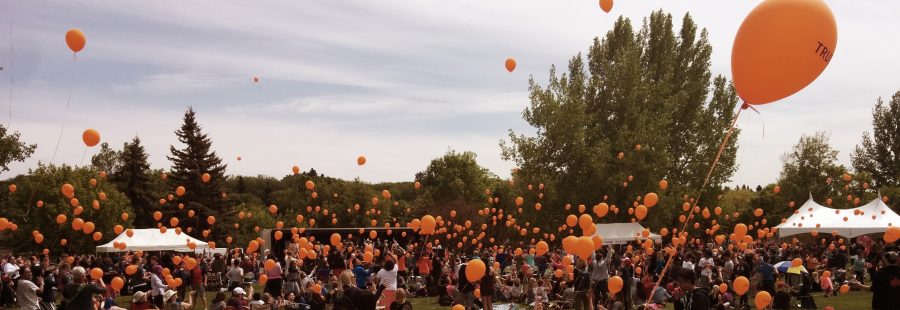
“As the balloons fly up, we release the truth over this land.” (These words were spoken at a Truth and Reconciliation Commission event, held June 2, 2015 in Saskatoon, SK – photo by author.)
Our vision and our hope in this discussion is not to “uproot” this school from its own history and its connection to Rome and the foundation of cultural literacy that is so integral to its pedagogy. In fact, we want the school to become more rooted in this place by acknowledging and delving into Canadian cultural and architectural heritage, both indigenous and settler. And from here, and growing out of the trajectory of covering western cultural history, to look more broadly at the diversity of world cultural history, and welcome the voices of people from inside and outside the school who can help teach us more. Our argument is that precisely because cultural literacy is a key value of this school, we are well-placed to take on this challenge.
Samuel Ganton is a graduate student at the University of Waterloo School of Architecture. His thesis research focuses on designing a thunderstorm observatory on a lake in Venezuela.


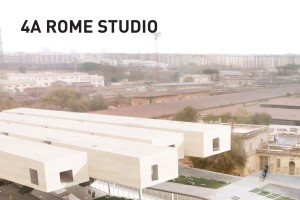
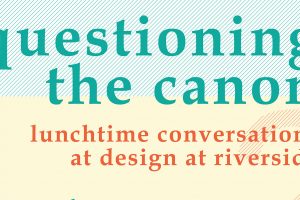
Leave a Reply